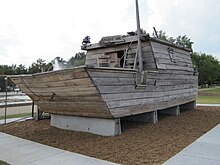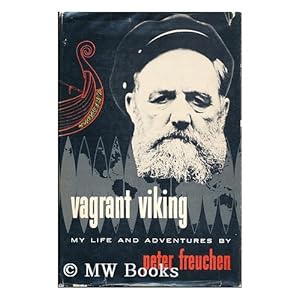Flatboat
Photo credit: wikipedia
Two keelboats, one being poled and one under sail, passing a flatboat.
Photo credit: wikipedia
I found a historical disagreement concerning the Chouteau’s. One source credits Jean Pierre with establishing Salina, another gives the credit to Auguste. I’m not a historian, but everything seems to say Jean Pierre was in the area first, so I’d lean his way. Since they were both eventually there and working together, it probably doesn’t make much difference. Also, there’s enough credit to go around. After all, it was their father, Rene A. Chouteau, who had founded St. Louis. Across the Neosho River from Salina, and a bit southwest, is the town of Chouteau, OK, also named for the brothers. It was originally a cattle town made prosperous by the Katy railroad starting in 1871, and called Cody Creek after a stream that flowed north of town. Both the name of the creek and the town were changed to Chouteau, again reflecting the wealth and influence the family was amassing along the upper Three Forks area. Jean Pierre’s son, August Pierre, called A.P., continued the family business in Salina and established another post along the Verdigris River and others along the Mississippi. His son, Pierre, who was called Cadet, continued the expanding business until around 1850, by which time the railroads had created a steady decline in river trade. He then moved to New York to diversify the family’s wealth into steamboats, railroads, and mining.







